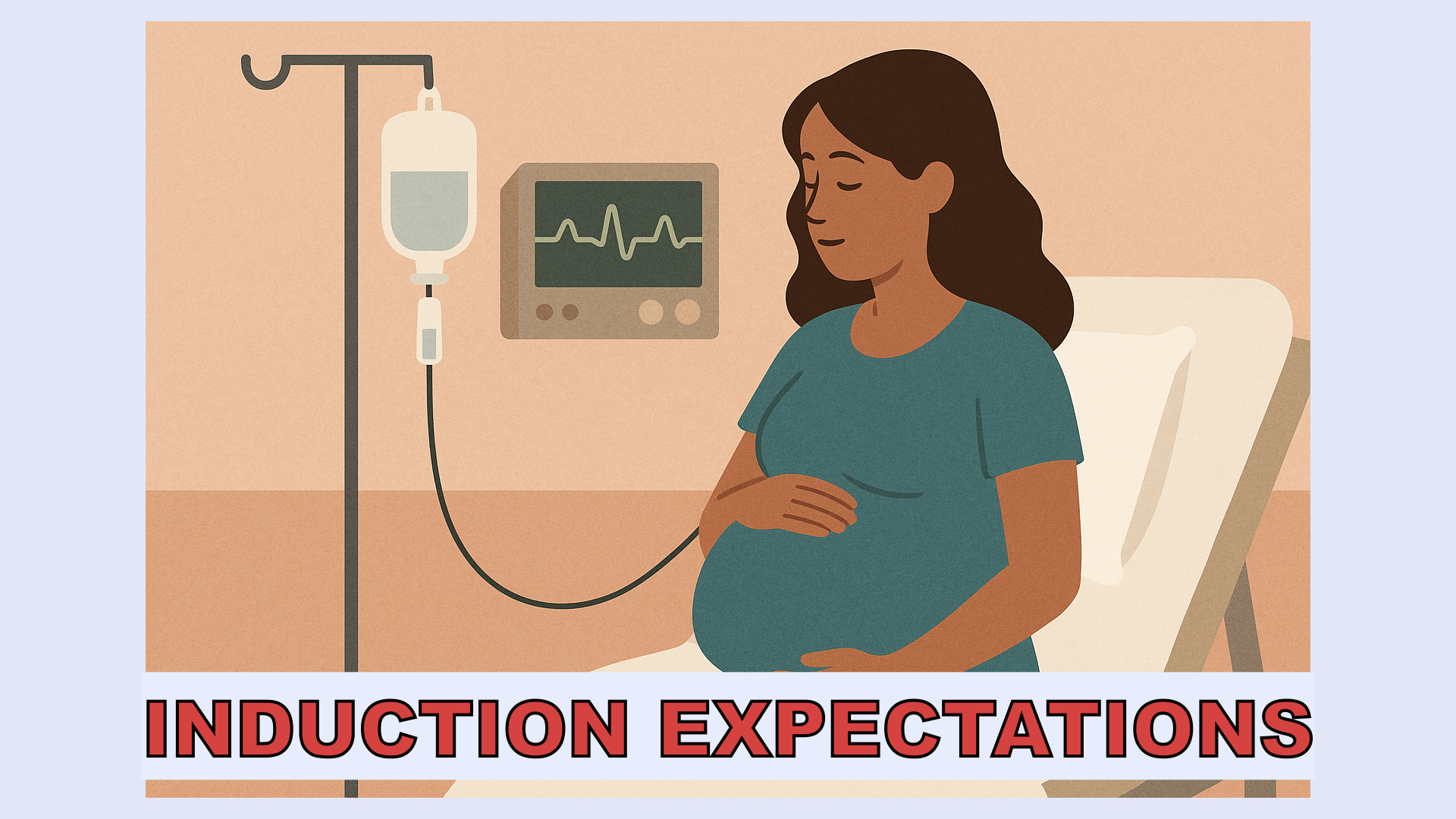What happens if I’m induced? Since inductions are common — and sometimes necessary — I wanted to share what I’ve learned from classes, research, and conversations with healthcare professionals.
Here’s a simple, clear breakdown of what you can expect if you’re scheduled for an induction, including why they happen, how long you might be in the hospital, and what the actual experience may look like.
A Quick Note
I’m not a medical professional—just a parent-in-training sharing what I’ve learned along the way. Always talk to your doctor or midwife about your specific situation.
Why Do People Get Induced?
Induction means your healthcare team is starting labor instead of waiting for it to begin naturally. There are a number of medical and practical reasons this might be recommended:
Common Reasons for Induction:
- You’re past your due date (usually beyond 41–42 weeks)
- Your water broke but labor hasn’t started on its own
- High blood pressure or preeclampsia
- Gestational diabetes
- Low amniotic fluid
- Concerns about baby’s growth or wellbeing
- Infection or other medical complications
- Elective induction (sometimes requested for personal or scheduling reasons, though not always offered unless full term)
Some of these are done to protect the baby, some to protect the birthing parent, and others to avoid risks that increase the longer the pregnancy goes past full term.
What Happens During an Induction?
Induction isn’t a single step—it can involve several stages depending on how ready your body is for labor. Your doctor or midwife will check your cervix and determine the right approach.
Methods of Induction Include:
- Cervical ripening with medication (like misoprostol or prostaglandin gel)
- Mechanical dilation using a Foley balloon
- Pitocin (synthetic oxytocin) through an IV to start or strengthen contractions
- Breaking your water (amniotomy) to help things move along
Depending on your body and baby, one or more of these methods may be used.
How Long Will It Take?
This is the hard part—induction can be quick or take a couple of days, especially if your body isn’t already showing signs of labor.
Timeline Expectations:
- If your cervix is closed and not effaced, it may take 1–2 days just to get to active labor.
- Once active labor starts, it may still be another 12+ hours before delivery, especially for first-time births.
- If things progress quickly, you could meet your baby the same day you check in.
Bottom line: Be prepared to stay a while, especially if you’re going in with no signs of labor.
How Long Will I Stay in the Hospital?
Hospital stay lengths vary depending on:
- Whether the birth was vaginal or a C-section
- If there were complications for baby or birthing parent
- Hospital policy and recovery needs
Average Hospital Stay:
- Vaginal Birth: 1–2 nights after delivery
- C-section: 3–4 nights after delivery
- Total with Induction: Add 1–3 days before delivery, depending on how long labor takes
So all in all, an induction might mean 3 to 5+ days total in the hospital.
Tips from a First-Time Parent Preparing for Induction:
- Pack extra in your hospital bag—more snacks, chargers, entertainment, and a few comfort items go a long way when you’re there longer.
- Ask your provider questions ahead of time so you understand what’s being done and why.
- Be flexible—this process can take time, and it may not follow your birth plan exactly. That’s okay.
- Rest when you can and take things hour by hour.
